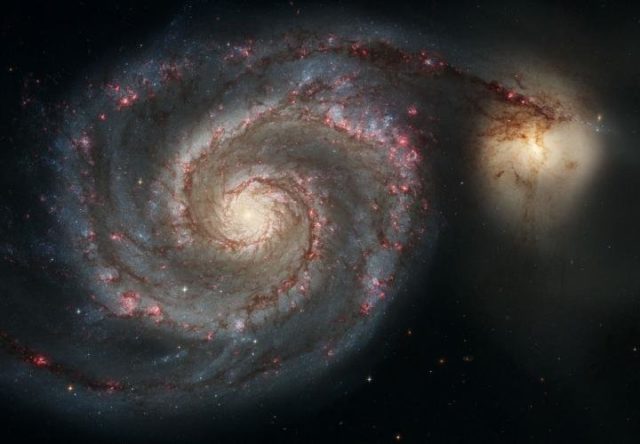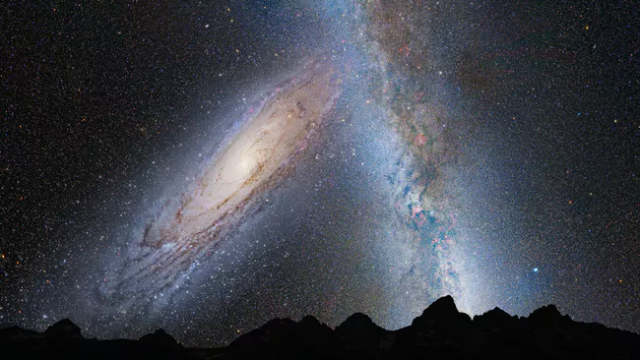New research predicts that the Large Magellanic Cloud hit the Milky Way in two billion years’ time.
The collision could occur much earlier than the predicted impact between the Milky Way and Andromeda, which scientists say will hit our galaxy in eight billion years.
Will you offer us a hand? Every gift, regardless of size, fuels our future.
Your critical contribution enables us to maintain our independence from shareholders or wealthy owners, allowing us to keep up reporting without bias. It means we can continue to make Jewish Business News available to everyone.
You can support us for as little as $1 via PayPal at office@jewishbusinessnews.com.
Thank you.
The catastrophic coming together with the Large Magellanic Cloud could wake up our galaxy’s dormant black hole, which would begin devouring surrounding gas and increase in size by up to ten times.
As it feeds, the now-active black hole would throw out high-energy radiation and while these cosmic fireworks are unlikely to affect life on Earth, the scientists say there is a small chance that the initial collision could send our Solar System hurtling into space.
The findings are published today in the journal Monthly Notices of the Royal Astronomical Society.
The Large Magellanic Cloud is the brightest satellite galaxy of the Milky Way and only entered our neighbourhood about 1.5 billion years ago. It sits about 163,000 light years from the Milky Way.
Until recently astronomers thought that it would either orbit the Milky Way for many billions of years, or, since it moves so fast, escape from our galaxy’s gravitational pull.
However, recent measurements indicate that the Large Magellanic Cloud has nearly twice as much dark matter than previously thought. The researchers say that since it has a larger than expected mass, the Large Magellanic Cloud is rapidly losing energy and is doomed to collide with our galaxy.
Lead author Dr Marius Cautun said: “While two billion years is an extremely long time compared to a human lifetime, it is a very short time on cosmic timescales.
“The destruction of the Large Magellanic Cloud, as it is devoured by the Milky Way, will wreak havoc with our galaxy, waking up the black hole that lives at its centre and turning our galaxy into an ‘active galactic nucleus’ or quasar.
“This phenomenon will generate powerful jets of high energy radiation emanating from just outside the black hole. While this will not affect our Solar System, there is a small chance that we might not escape unscathed from the collision between the two galaxies which could knock us out of the Milky Way and into interstellar space.”
The collision between the Large Magellanic Cloud and the Milky Way could be spectacular, the researchers say.
Co-author Professor Carlos Frenk, Director of the Institute for Computational Cosmology, Durham University, said: “Beautiful as it is, our Universe is constantly evolving, often through violent events like the forthcoming collision with the Large Magellanic Cloud.
“Barring any disasters, like a major disturbance to the Solar System, our descendants, if any, are in for a treat: a spectacular display of cosmic fireworks as the newly awakened supermassive black hole at the centre of our galaxy reacts by emitting jets of extremely bright energetic radiation.”
The research team, led by scientists at Durham University’s Institute for Computational Cosmology working with the University of Helsinki, in Finland, used the EAGLE galaxy formation supercomputer simulation to predict the collision.





